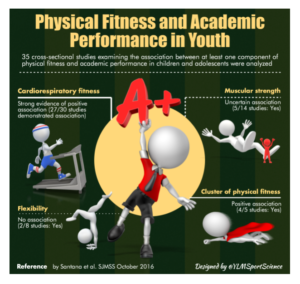Generally speaking, training for a road race involves 3 to 4 basic workout types, each with a specific objective.
- The long/slow jog — is designed to build endurance in both the aerobic system and the working tissues
- The “tempo” run — is designed to improve efficiency and begin to stimulate improvements in the athletes ability to sustain a more challenging pace
- “Speed work” — is designed to train the muscular system anaerobically and emphasizes “cadence” (steps per minute) or what is sometimes called “turn over”
- Movement Quality — these workouts, although optional for younger athletes help to build the flexibility and strength required to improve performance without risking injury.
To prepare for your first 5k, it is typically beneficial to slowly and steadily progress training volume (how much) and intensity over and 8-12 week period, broken into 2-3 “phases” of training: “base” (cardiovascular and aerobic fitness), “build” (sustained aerobic exertion and anaerobic strength), and “peak” (anaerobic strength and speed).
Building A Proper Base
Spending the first 2 (if only 8 weeks till race day) and up to 4 (if 12 weeks till race day), focusing effort on aerobic fitness is a great way to start! The focus of each workout should be on accruing time achieved without rest, while maintaining an exertion level of approximately 4-5. Attempt 3, 30 minute efforts per week, with at least one day of rest from running in between.
Week 1 Example:
- Monday, Wednesday, and Saturday – Five minutes of jogging, followed by 1 minute of walking, repeat 5 times
Week 2 Example:
- Monday, Wednesday, and Saturday – Eight minutes of jogging, followed by 2 minute of walking, repeat 3 times
Week 3 Example:
- Monday, Wednesday, and Saturday – Thirteen minutes of jogging, followed by 2 minute of walking, repeat 2 times
Week 4 Example:
- Monday, Wednesday, and Saturday – Fifteen minutes of jogging, rest briefly as needed, and repeat
Of course these are just examples to follow and training is best when individualized to the personal fitness levels and abilities of each. Adjust this program as needed, and be sure to ask your coach for help. The most important thing…get out and MOVE, and have fun!




